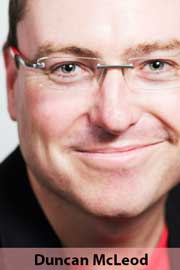 In a little over seven weeks, Microsoft will deliver what is set to be the last big version upgrade to its flagship Windows operating system. It will mark the end of an era of packaged operating systems.
In a little over seven weeks, Microsoft will deliver what is set to be the last big version upgrade to its flagship Windows operating system. It will mark the end of an era of packaged operating systems.
On 29 July — the launch date was revealed this week — consumers will be able to download Windows 10 to their PCs and tablets.
Those running legitimate copies of older versions of Windows — 7 and 8.1 — will get the new software free of charge (XP and Vista users are excluded from the free upgrade deal).
Windows 10 is set to be starkly different to how consumers have installed and experienced Windows in the past.
Firstly, most users will get the new operating system through Windows Update rather than buying a boxed product on DVD at a retail store. (However, given South Africa’s broadband constraints, consumers will also be able to take their computers to selected IT retailers to have the upgrade done in-store.)
Secondly, Windows 10 will begin a significant shift away from the way Microsoft has historically sold its software. Windows is set to become a service, where updates and improvements are delivered more frequently, more in line with the way smartphones work. It’s possible there never will be a Windows 11. That doesn’t mean this is the end of the line for Windows — far from it. It’s just that the business model has shifted. Don’t be surprised if at some point in the future, Microsoft asks Windows users to pay an annual subscription fee in return for getting the latest updates, much like it does today with Office 365.
Microsoft has also changed the way it’s building the latest version of Windows. It has made technical previews available to anyone interested in running the pre-release software. More than 4m people are already running the software ahead of its launch. This has helped Microsoft interface directly with both business and retail users, getting valuable feedback on what they like and don’t like about the operating system. According to Anthony Doherty, who heads the Windows Business Group at Microsoft South Africa, Windows 10 developers have received more than 800 000 individual feature requests and other feedback from users of the technical preview.
Those already running the technical preview won’t have to upgrade to the final version and can simply elect to continue running the pre-release software. There are risks associated with this — the software is not deemed sufficiently bug-free to warrant commercial release — but millions of more technically minded users (read: geeks) are likely to go for this option to be first to get to tinker.
Windows 10 includes a range of new features. Chief among them is a new Start menu (ditched controversially in Windows 8), which marries the interface design elements of Windows 7 with the much-loathed tile-driven design of 8. Where Windows 8 felt like a rushed and forced reaction to tablet competitors — the iPad was ascendant at the time — Windows 10 looks at home on both tablets and on traditional keyboard-and-mouse-driven PCs.

Also included in Windows 10 is a new Web browser, called Edge. The much-maligned Internet Explorer is still there, mainly for corporate users with legacy business applications only supported in IE. But Edge is the new default browser. With Edge, Microsoft is hoping to reclaim some of the market share it has lost in recent years to Google’s Chrome and the open-source Firefox browser.
The new software also includes Cortana, Microsoft’s voice-driven personal assistant and rival to Apple’s Siri and Google’s voice search tools.
Unfortunately, Doherty says Cortana will not be available in South Africa at Windows 10’s launch and won’t say if Microsoft has any plans to introduce it here. What he will say is it’s not imminent.
Users can, however, change their computer’s region settings to the US or the UK to get access to a limited set of its services.
This issue is, however, unlikely to hold back many South African users from upgrading. Microsoft will be hoping to get as many Windows 7 and 8 users onto 10 as quickly as possible. With the free upgrade offer, it surely will. Convincing the hold-outs still running the 14-year-old Windows XP could be trickier.
- Duncan McLeod is TechCentral’s editor. Find him on Twitter
- This column was first published in the Sunday Times




